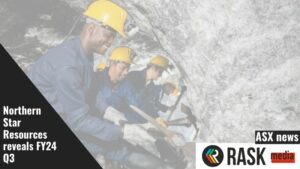The Telstra Corporation Ltd (ASX: TLS) share price is on watch after the telco reported underlying growth in its HY22 result.
Telstra’s HY22 growth
The telco revealed two sets of different numbers to investors today. Telstra’s statutory (reported vs underlying explained) numbers included one-offs which negatively impacted things.
Statutory total income included declines of around $450 million in one-off NBN receipts (the NBN is steadily paying Telstra for buying the cables infrastructure it bought years ago) and $200 million in NBN commercial works. There were also one-off gains relating to the sale of its Velocity and South Brisbane Exchange fibre assets and sale and lease back of the Pitt Street exchange.
Management said that the underlying results demonstrated the benefits of its T22 strategy.
So, let’s look at the numbers:
- Statutory income down 9.4% to $10.9 billion
- Statutory EBITDA fell 14.8% to $3.5 billion
- Statutory net profit after tax declined 34% to $0.7 billion
- Underlying income down 4.4% to $10.7 billion
- Underlying EBITDA up 5.1% to $3.5 billion
- Underlying earnings per share (EPS) up 55% to 5.2 cents
- Dividend per share flat at 8 cents per share
What Telstra is trying to say with those underlying numbers is that if you look at the core business, profitability has increased. Rising underlying profit can help the Telstra share price.
What drove the higher profit?
Telstra was pleased to tell investors that its underlying HY22 EBITDA was bigger than the second half of FY21, which was bigger than the first half of FY21.
There was one division that drove nearly all of the EBITDA improvement – mobile. All of its ‘fixed’ divisions/products saw EBITDA declines.
Mobile saw a 25% increase in profit to $1.96 billion (or $392 million improvement in dollar terms). Telstra put this improvement down to service revenue growth, plan structure, hardware and productivity. The telco said this reinforced its clear leadership in 5G. It added 84,000 net retail post-paid mobile services.
It has made very strong progress in its productivity program. Underlying fixed costs were down by $254 million and total operating expenses fell $644 million, or 8%. It’s on track to achieve a reduction of underlying fixed costs by $430 million.
T22 and T25
Telstra has been working on the T22 strategy for a few years. It’s nearly complete, with more than 80% of metrics now achieved or on track to be delivered. Over the last year, the Telstra share price has risen 23%, so it appears to be working.
The telco points to a few measures showing an improved experience for customers. The number of calls to its consumer and small business contact centres has fallen by 70% and all of those calls will be answered in Australia by the end of this financial year. The amount of customer complaints is at the lowest since the migration to the NBN began.
Telstra has been making progress on its T25 strategy. It has announced two major infrastructure projects and also noted the acquisition of Digicel Pacific. Last month, Telstra Health was selected to deliver 1800RESPECT for an initial five years at an estimated contract value of around $200 million.
Telstra Energy has received the final license approvals for Victoria in December. This adds to approvals in Queensland, NSW and South Australia.
Final thoughts on the Telstra share price and result
I thought this was a solid update. Telstra can’t control the timing of NBN payments, so it’s worthwhile for investors to think about the underlying performance. Any growth, even single digits, is good after years of declines.
I’d prefer Telstra to buying the big four banks for income. I like the earnings diversification and market leadership that Telstra has. So, its 5.6% dividend yield (including the franking credits) is pretty good.




